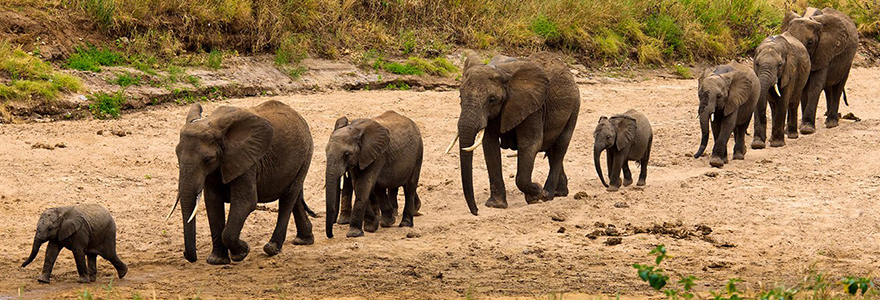
This parks stretches over an area of approximately 2850sq km, fringed by faraway Lake Manyara from the south east, also bringing in many wild animals, deemed the biggest habitat of game besides Serengeti plains. In the park, you will see predators such as; lion prides, terrestrial antelopes such as stately oryx and also unusual long-necked gerenuk. Many other Tanzania safari animals comprise of wildebeests, zebras, hartebeest, eland, gazelles, impalas, buffalos, and other people. Elephant groups are usually seen be it in the rainy or dry seasons.The swamps are the draw for 550 bird species, many of which tend to be occupants while others migrants. Examples include some sort of yellow collared lovebird, tailed weaver, guinea fowl, kestrel’s harriers, buzzards in addition to martial fish eagles. For drier ground you get the Kori bustard, the ostrich, the world’s largest bird in addition to modest flocks of ground hornbills. Termite mounds in many cases are used by flocks of your captivating dwarf mongoose, red-and-yellow barbet, which usually use deafening, clockwork-like sounds therefore captivating guests.Tarangire’s pythons climb trees, just as its lions and also leopards, lounging in the acacia along with sausage woods.The park is also legendary for its magnificent baobab trees, some countless years old. The Poacher’s Lookout tree is one having a small entrance to the hollow tree area, spacious enough to make a night stay for more than 4 people. It was traditionally used by unlawful poachers that had been trying to hide from the game park scouts. Burungi and also Kitabong hills on the western area possess timeless daum palm trees.Getting thereDrive from Arusha 118km or Lake Manyara following a tarmac road to around 7km on the leading entrance gate; you could visit Ngorongoro Crater and also the Serengeti.Charter flights from Arusha and also the Serengeti.Things to doCarefully guided walking safaris.Day visits to Maasai as well as Barabaig towns, as well as towards the hundreds of early rock paintings near Kolo to the Dodoma Road.When to goThe dry season right from June to September is great because of large numbers of animals during the the park’s interior migration in search of water. Game move from the Masaai steppe for the park over the dry period. Tours can still be made all year round.AccommodationTwo lodges, a single tented lodge, pair deluxe tented camps inside the park, an additional half-dozen exclusive lodges as well as tented camps just beyond its edges.